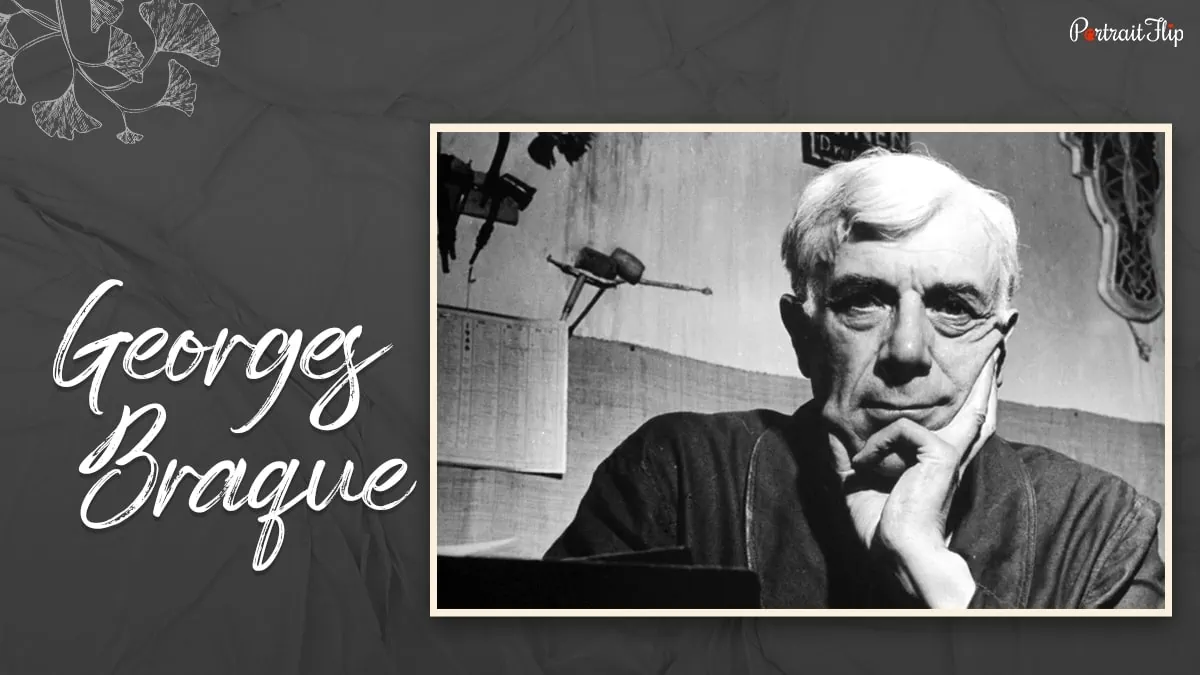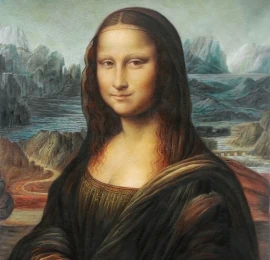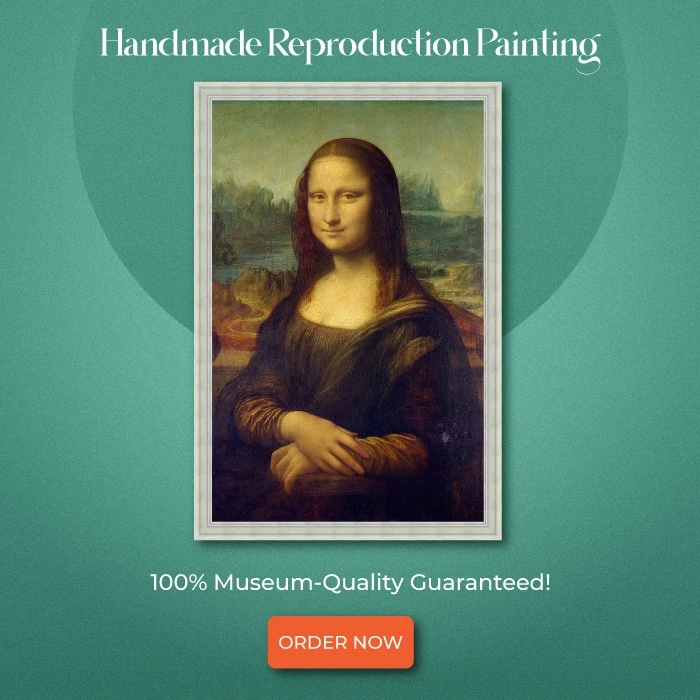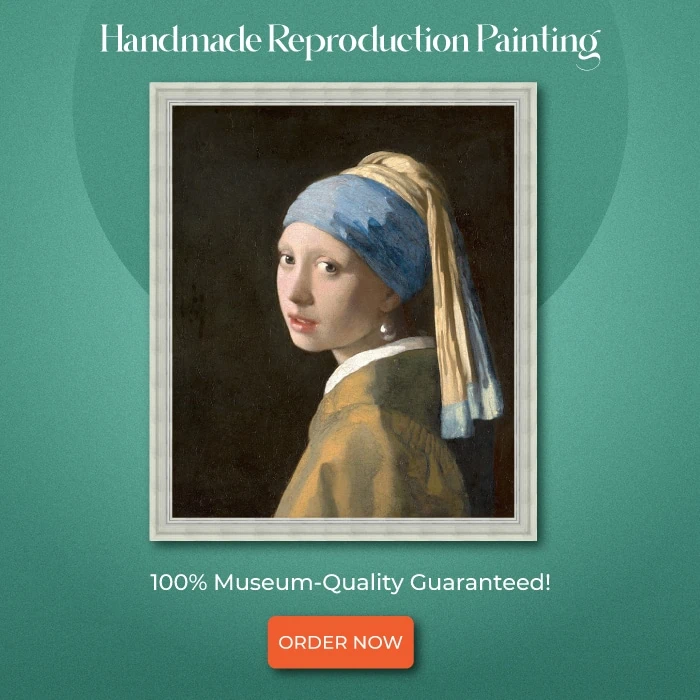Let’s start with a short story about a famous art movement.
There was an artist who visited Africa.
During his exploration, he ran into some interesting African arts that became an inspiration for him.
As a result, the first cubist painting took place in 1907. The end!
How was the story? Interesting?
Well, that was not the end. It was the beginning of something big that was going to conquer the whole world.
The Cubist movement was introduced, giving new meaning to the history of art.
Why the new meaning? Because it was not a regular art.
The artist rejected the concept of copying nature or traditional techniques. Instead, they started painting in geometrical shapes that opened multiple perspectives in the viewer’s eye.
But who was that artist? Which is the first Cubist painting? Are there more famous cubism painters involved?
A question: Who are the famous artists of cubism?
Table of contents
11 Famous Artists of Cubism
Cubism was the most influential movement in the 20th century that shook the painter’s approach to art.
With the gradual progress of this movement, the painters of other movements tried their hands and showed their skillful artistic talents.
Let’s learn about the various artists of cubism and their roles during this art movement!
1. Pablo Picasso

| Periods | Cubism, Modern art, Picasso’s Blue Period, Surrealism |
| Best Work During the Cubism Period | Les Demoiselles d’Avignon, Guernica, The Weeping Woman, and Le Reve |
| Nationality | Spanish |
| Known For | Painting, Drawing, Sculpture, Printmaking, Stage Design, and Writing |
Of course, the first name would be Pablo Picasso; after all, he brought the Cubist movement into existence in the first place.
Yes, you read it right. The artist in the above story is none other than Pablo Picasso.
He was the one who went on a tour to Africa and got inspired by the arts, or should I say fell in love?
Well, I don’t know about love, but this little visit took a huge turn in his life, which made him the father of the cubism art movement.
The first Picasso cubism painting produced was Les Demoiselles d’Avignon, which created an outrage in history.
This Cubist painting by Picasso draws inspiration from two historical notions: Iberian sculptures and African figurative art.
Besides cubism, there was the Rose Period, Analytic Period, African-influenced Period, and Blue Period.
Picasso’s works also featured the Expressionism and Surrealism movements.
During the invention of cubism, the sole purpose was to bring out painters who loved to create human figures in geometric shapes.
Interesting Fact: Four Picasso canvases were exhibited at the Louvre in 2015 to celebrate the 30th anniversary of the Musée National Picasso-Paris.
2. Georges Braque

| Periods | Cubism, Modern art, Fauvism, Analytical Cubism |
| Best Work During the Cubism Period | Houses At l’Estaque, Fruit Dish and Glass, Violin and Candlestick, and Little Harbor in Normandy |
| Nationality | French |
| Known For | Painting, Drawing, Sculpture, and Printmaking |
Here comes the second person who brought cubism along with Picasso.
Picasso didn’t visit Africa alone; he went with his most loyal friend, Georges Braque.
Despite the fact that George only played with styles and colors, he still experimented with cubic art and supported Picasso in the expansion of movement.
Do you know that the ideas that were incorporated into cubism were already used in one of the movements?
It’s true, Fauvism has previously tried to embrace the concept, although it didn’t turn out to be successful at the time.
The motto of these two prolific artists was to portray collages and use entire canvasses in order to reflect the modern age.
So were they successful? Let’s learn from the other famous artists who were a big part of this journey.
3. Juan Gris

| Periods | Cubism, Modern art, Synthetic cubism, Analytical Cubism |
| Best Work During the Cubism Period | Portrait of Pablo Picasso, The Sunblind, Still Life before an Open Window, and Guitar on a Table |
| Nationality | Spanish |
| Known For | Painting, Drawing |
Another famous artists of cubism—Juan Gris!
The most demanding and highly appreciated cubism art falls into Juan Gri’s painting list.
1911 was the turning point that brought name and fame to his life.
He started developing his own style of painting, which eventually made his name renowned among cubism’s most famous works.
George was a devotee of Picasso and his works. He recreated Picasso’s cubism self-portrait, “Portrait of Pablo Picasso,” in 1912.
Among various famous Spanish artists, George was also known for his different viewpoints on artwork.
He used to combine subjects in one image to give it a one of a kind appearance.
His cubist art creates a new way of imagining things around you and mirrors the complexity of the modern age.
4. Albert Gleizes

| Periods | Cubism, Abstract art, Impressionism, Section d’Or |
| Best Work During the Cubism Period | La Femme aux Phlox and New York |
| Nationality | French |
| Known For | Painting, Writing |
We know who the original inventors were of cubism artworks, but the ones who contributed and took the art to a different level are no less than inventors.
Albert Gleizes is the artists of cubism, whose tremendous work and creative mindset positioned cubism painting at the top.
He not only contributed through his amazing works but was also driven by social ideals that made him produce the finest pieces of art.
He was widely known among the famous abstract artists.
Being one of the key artists of cubism, Albert’s masterpieces became increasingly popular due to their dynamic intersection of geometric planes.
Apart from his various cubist portraits, “La Femme aux Phlox” was counted as his best artwork.
Suggested read: Famous Louvre Paintings You Shouldn’t Miss When Visiting the Paris Museum!
5. Jean Metzinger

| Periods | Cubism, Fauvism, Neo-Impressionism, Section d’Or, Divisionism |
| Best Work During the Cubism Period | Le goûter (Tea Time), Nature morte, L’Oiseau bleu, and Deux Nus |
| Nationality | French |
| Known For | Painting, Poem Writing, Drawing |
Jean Metzinger was one of the most prolific artists of cubism and a prominent member of the French Avant-Garde, which made him one of the most renowned French artists of all time.
Metzinger started working on cubist painting when it was growing in European art.
Just look at his best work, Le goûter (Tea Time) (1911), which combines a divisional brushstroke and demonstrates new art’s mobile perspectives.
These cubist artists tried to distort the space around the object and place pieces of those elements in multiple areas.
This allows the viewers to take a minute to get an overall glance at the artwork.
Jean was one of the artists of cubism who embraced this concept with open hands and presented it in a vast form in front of the audience.
6. Andre Lhote

| Periods | Cubism, Fauvism, and Section d’Or |
| Best Work During the Cubism Period | L’escale, Cordes, Les Deux Amies, and Acacias |
| Nationality | French |
| Known For | Painting, Teaching, and Writing |
André was one of the French cubist painters who was versatile, thoughtful, and highly skilled in his work.
He was a gifted man with marvelous paintings and mastery in sculpture.
His main interest was in the Cubist movement, which eventually made his career meaningful and artistic in the early days.
In 1905, he devoted his entire time to painting, which produced the most amazing cubism artwork examples.
Paul Gaugin and Cezanne were his main inspirations, including the creation of Cubist paintings.
In four years, André held his first solo exhibition at Galerie Druet, which was huge!
7. Salvador Dali

| Periods | Surrealism, Cubism, Dada work, Modern art |
| Best Work During the Cubism Period | Neo-Cubist Academy (Composition with Three Figures) and Dali’s Cubist Self-Portrait |
| Nationality | Spanish |
| Known For | Painting, Teaching, Writing, Drawing, and Photography |
Whenever you hear Surrealism, Dali’s melting clock painting image is in front of your eyes.
But little did anyone know that he was also known among the artists of cubism.
Salvador Dali first became familiar with Cubism in 1922.
He had been into cubist paintings since he was in school.
Dali eventually became a big name in cubism after he started experimenting with various styles and techniques.
Some familiar artworks by Salvador Dali depict cubism, such as Cubist Self-Portrait, which is a superb example of how influence can collide.
8. Paul Cezanne

| Periods | Impressionism, Cubism, Post-Impressionism, Modern art |
| Best Work During the Cubism Period | Bathers and The Basket of Apples |
| Nationality | French |
| Known For | Painting |
Who knows Paul Cezanne? The Card Players artist? You are absolutely correct!
But he was the only artists of cubism who bridged the gap between Impressionism in the 19th century and Cubism in the 20th century.
Despite the fact that ‘Mont Sainte-Victoire Seen From The Bibemus Quarry’ was created before the cubism movement came into existence, it still impacted the lives of famous cubist painters.
But do you know why he practiced cubism in the first place?
It’s because Paul likes to explore unusual stuff, and the main reasons were geometry and a new perspective.
He was recognized for merging colors and using small brush strokes to add high volume and intensity to his works.
His paintings highly influenced several famous Cubist artists, including Braque and Picasso.
In his most famous works, objects appear to have their own independent space, which contradicts the single-point-of-view linear perspective.
Cezanne’s amazing views drive the attention of the viewers, making his art the most expensive among other painters.
9. Piet Mondrian

| Periods | De Stijl, Cubism, Modernism, Abstract art, Modern art, Impressionism, and Expressionism |
| Best Work During the Cubism Period | Gray Tree |
| Nationality | Dutch |
| Known For | Painting |
Piet was another artists of cubism who contributed to the movement in his own style.
You already know Paul Cezanne and other cubist artists’ works, which eventually awakened interest among Dutch painters.
Fascinated by new forms of art, the artist indulged themselves in experiments with fresh cubist concepts.
In 1911, Piet Mondrian first saw Braque and Pablo Picasso’s famous cubism paintings, which affected him on a different level.
Initially, his paintings impersonate Cubism’s analytical approach (the second period of Cubism).
The portrayal of simple and overlapping shapes to express the individuality of the subject in the artwork was the objective of this type of cubist portrait.
Piet was known for his use of gray, beige, and colors tinged with orange with single lines.
Other artists of cubism were interested in portraits of people, whereas he leaned towards nature and its aspects.
The introduction of new styles that involved horizontal and vertical axes with splashes of color (also known as neoplasticism) put Piet among the list of cubist artists.
Suggested read: 22 Paintings Of Romanticism
10. Lyonel Feininger

| Periods | De Stijl, Modern art, Expressionism, Cubism, Der Blaue Reiter |
| Best Work During the Cubism Period | Lady in Mauve, The Cathedral, and The High Shore |
| Nationality | German-American |
| Known For | Painting, Cartoonist, and Photography |
Lyonel was one of the artists of cubism who had success in caricature art, both in Germany and the United States.
Apart from famous Cubist artists, music was his first love.
When he returned to Paris, Robert Delaunay became his inspiration to paint in a colorful style by using overlapping areas and crossing rays of light that leave an artistic effect.
He even worked on comic strips for the Sunday edition of The Chicago Tribune, which was commissioned by editor James Keelay.
His expressive style was a mash-up of Cubism, Orphism, and Rayonism, which was commendable.
Due to these amazing concepts incorporated into his artwork, Wassily Kandinsky and Franz Marc invited him to perform alongside them in 1913.
11. Fernand Leger

| Periods | Cubism, Modern art, Modernism, Section d’Or |
| Best Work During the Cubism Period | Woman with a Cat, Nudes in the forest, and Contrasts of Forms |
| Nationality | French |
| Known For | Painting, Filmmaking, and Printmaking |
Last but not least, Fernand Leger, the artists of cubism, was considered the forefather of Pop Art.
By depicting a cylindrical shape in one of his paintings, he gained popularity among famous artists.
An interesting fact: Fernand never followed the paths of Picasso and Braque.
Instead, he explores different ways to illuminate the reality of the subjects by simply adding geometrical planes and having an open perspective, which can create multiple outlook in people’s eyes.
He valued its potential to highlight the art by shifting the focus from theme to object and modifying its aspects.
Leger raised abstract art to a new level and laid the groundwork for many key art movements.
He combined abstract and geometric elements to create a composition that evokes nature.
This style earned him the Tubism movement, which renounced his subject matter in the most modern and fascinating way.
Suggested read: 22 Contemporary Black Artists Who Altered The Perspective Of The Art Community
To Conclude
Each artist in Cubism has made the movement unique through their experiments.
The best part about these famous cubism artists is that they created cubism art styles according to their own perspectives and thoughts.
Some got inspired by other artists, whereas some were the inspiration. Some collaborated with the new forms, and some made cubism a new concept in their lives.
One art movement contributed to an artist’s life in several ways.
Why not have one of them decorated on our walls that narrates a story of artist fascination?
With our reproduction paintings, the possibility of having such amazing art is right in front of your eyes. Just click on the link below and explore!
To My Readers
How did you find the blog about the artists of Cubism?
Interesting, informative, and full of facts?
I have listed 11 artists of Cubism who played an important role in bringing the art movement to great heights.
However, if you think that I have missed some important information, feel free to write in the comments section below.
I would love to hear your thoughts and suggestions.
For more amazing content, you can follow us on Instagram and subscribe to our YouTube channel.
Don’t miss any updates.
See you soon in the next blog!
Frequently Asked Questions
The Cubist art movement was invented by iconic artists Pablo Picasso and Georges Braque.
Pablo Picasso was one of the most influential artists of Cubism; he created over 50,000 works of art in his career.
Houses At l’Estaque, Fruit Dish and Glass, Violin and Candlestick, and Little Harbor in Normandy are some of his famous Cubist works.
Juan Gris, a cubist artist, made the famous portrait of Pablo Picasso.






